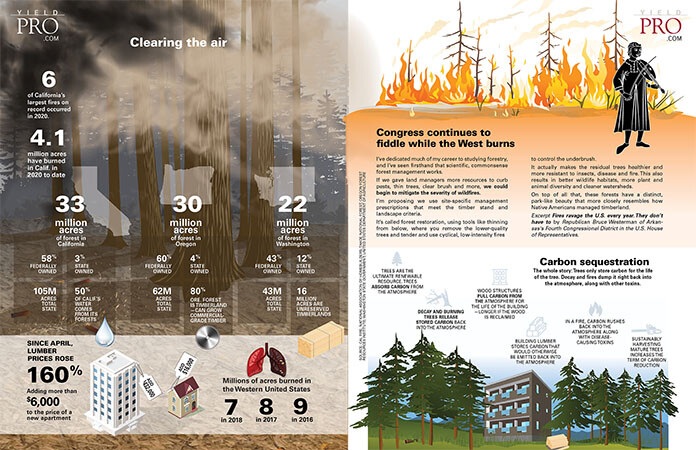CALIFORNIA
- 6 of California’s largest fires on record occurred in 2020.
- 1 million acres have burned in California in 2020 to date
- 33 million acres of forest in California
- 58% federally owned
- 3% state owned
- 105 million acres total state
- 50% of California’s water comes from its forests
OREGON
- 30 million acres of forest in Oregon
- 60% federally owned
- 4% state owned
- 62 million acres total state
- 80% of Oregon forest is timberland—can grow commercial-grade timber
WASHINGTON
- 22 million acres of forest in Washington
- 43% federally owned
- 12% state owned
- 43 million acres total state
- 16 million acres are unreserved timberlands
Since April, lumber prices rose 160% adding more than $6,000 to the price of a new apartment,
Millions of acres burned in the Western United States:
- 7 million in 2018
- 8 million in 2017
- 9 million in 2016
Congress continues to fiddle while the West burns
I’ve dedicated much of my career to studying forestry, and I’ve seen firsthand that scientific, commonsense forest management works.
If we gave land managers more resources to curb pests, thin trees, clear brush and more, we could begin to mitigate the severity of wildfires.
I’m proposing we use site-specific management prescriptions that meet the timber stand and landscape criteria.
It’s called forest restoration, using tools like thinning from below, where you remove the lower-quality trees and tender and use cyclical, low-intensity fires to control the underbrush.
It actually makes the residual trees healthier and more resistant to insects, disease and fire. This also results in better wildlife habitats, more plant and animal diversity and cleaner watersheds.
On top of all that, these forests have a distinct, park-like beauty that more closely resembles how Native Americans managed timberland.
Excerpt Fires ravage the U.S. every year. They don’t have to by Republican Bruce Westerman of Arkansas’s Fourth Congressional District in the U.S. House of Representatives.
Carbon sequestration
The whole story: Trees only store carbon for the life of the tree. Decay and fires dump it right back into the atmosphere, along with other toxins.
- Trees are the ultimate renewable resource. Trees absorb carbon from the atmosphere.
- Decay and burning trees release stored carbon back into the atmosphere
- Wood structures pull carbon from the atmosphere for the life of the building—longer if the wood is reclaimed
- Building lumber stores carbon that would otherwise be emitted back into the atmosphere
- In a fire, carbon rushes back into the atmosphere along with disease-causing toxins
- Sustainably harvesting mature trees increases the term of carbon reduction












